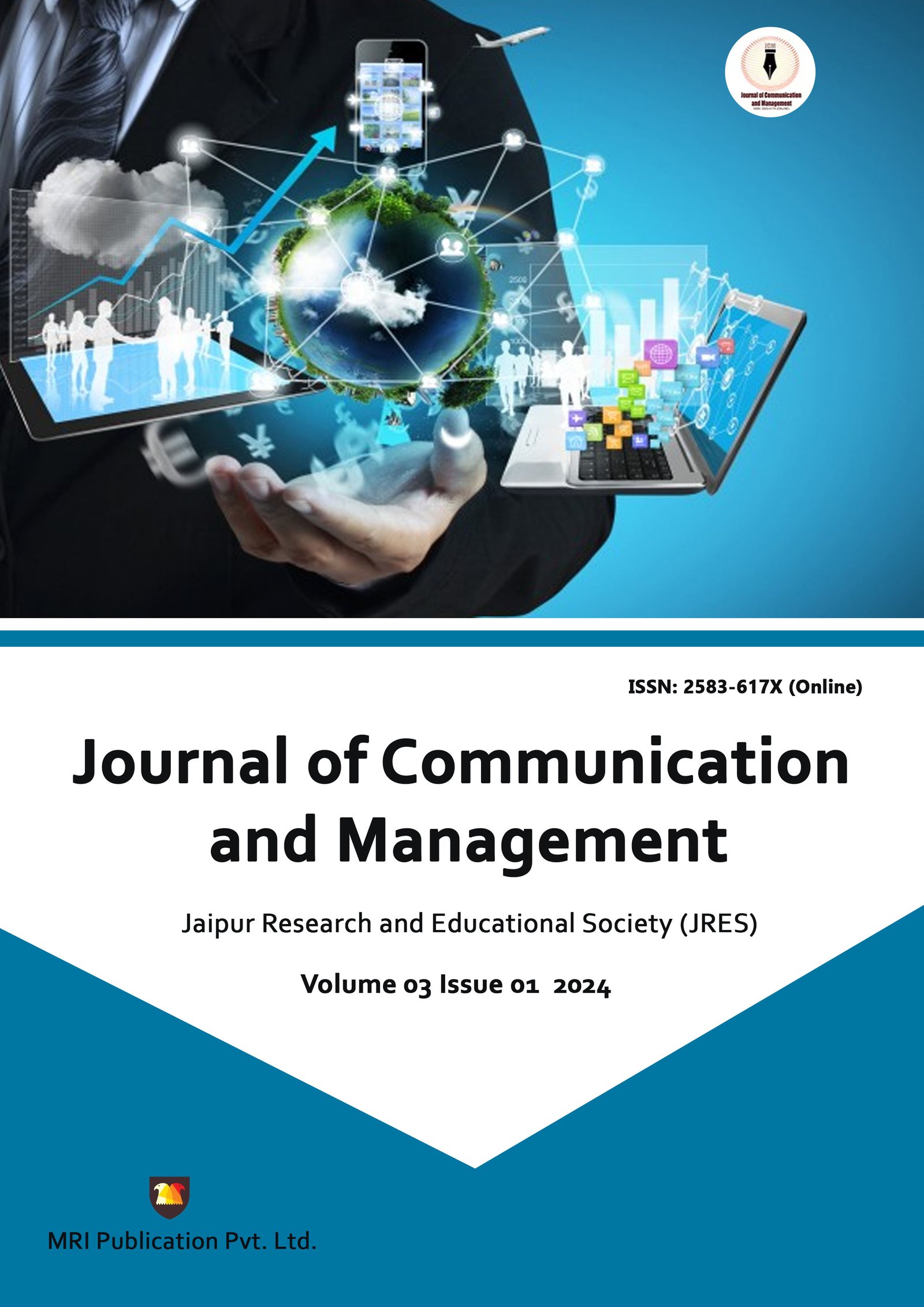From Compliance to Commitment: The Evolving Landscape of Sustainable Supply Chains considering BRSR and other Regulatory Frameworks
DOI:
https://doi.org/10.58966/JCM2024318Keywords:
Sustainable supply chains, BRSR, ecosystem, regulatory mechanismsAbstract
The global business landscape has witnessed a paradigm shift towards sustainability in recent years, with an increasing focus on responsible business practices. Maximum environmental impact is created at the value chain rather than the final producers. One crucial aspect of this shift is the adoption of sustainable supply chain management by companies worldwide. This abstract explores the role of companies in adapting to regulations such as the business responsibility and sustainability reporting (BRSR) framework
and other similar initiatives aimed at enhancing environmental, social, and governance (ESG) performance. Sustainable supply chains play a pivotal role in mitigating traditional business operations’ environmental and social impacts. The BRSR framework and other regulatory mechanisms provide a structured approach for companies to disclose their sustainability efforts and demonstrate transparency in their supply chain activities. This study delves into the critical components of these regulations and how companies are
navigating the complexities of compliance. Companies increasingly recognize that integrating sustainability into their supply chains aligns with regulatory expectations and enhances long-term business resilience. This study will examine the role of sustainable supply chains in their procurement, production, and distribution processes to mitigate risks associated with climate change, resource scarcity, and social inequality. The study also explores companies’ challenges in implementing sustainable practices and innovative strategies to overcome these hurdles. In conclusion, this study emphasizes the evolving landscape of sustainable supply chains and the proactive measures companies take to adapt to regulatory frameworks like BRSR. By embracing sustainability as a core business value, companies comply with regulations, foster innovation, improve stakeholder relationships, and contribute to a more resilient and responsible global business ecosystem.
References
• Chaabane, A., Ramudhin, A., & Paquet, M. (2011). Designing supply chains with sustainability considerations. Production Planning & Control, 22(8), 727–741. https://doi.org/10.1080/09537287.2010.543554
• Nolan, J., & Bott, G. (2018). Global supply chains and human rights: spotlight on forced labor and modern slavery practices. Australian Journal of Human Rights, 24(1), 44–69. https://doi.org/10.1080/1323238x.2018.1441610
• Orji, I. J., Kusi‐Sarpong, S., & Gupta, H. (2019). The critical success factors of using social media for supply chain social sustainability in the freight logistics industry. International Journal of Production Research, 58(5), 1522–1539. https://doi.org/10.1080/00207543.2019.1660829
• Rueda, X., Garrett, R., & Lambin, É. F. (2017). Corporate investments in supply chain sustainability: Selecting instruments in the agri-food industry. Journal of Cleaner Production, 142, 2480–2492. https://doi.org/10.1016/j.jclepro.2016.11.026
• Soundararajan, V., & Brown, J. A. (2016). Voluntary governance mechanisms in global supply chains: Beyond CSR to a stakeholder utility perspective. Journal of Business Ethics, 134, 83-102.
• Schwartz, K., Tapper, R., & Font, X. (2008). A sustainable supply chain management framework for tour operators. Journal of Sustainable Tourism, 16(3), 298–314. https://doi.org/10.1080/09669580802154108
• Tumpa, T. J., Ali, S. M., Rahman, M. H., Paul, S. K., Chowdhury, P., & Khan, S. A. R. (2019). Barriers to green supply chain management: An emerging economy context. Journal of Cleaner Production, p. 236, 117617. https://doi.org/10.1016/j.jclepro.2019.117617
• Von Geibler, J. (2013). Market-based governance for sustainability in value chains: conditions for successful standard setting in the palm oil sector. Journal of Cleaner Production, 56, 39–53. https://doi.org/10.1016/j.jclepro.2012.08.027





